Liz Carlson is the travel photographer and blogger behind Young Adventuress—the world's leading solo female travel blog. Living in Wanaka—the winter hotspot of New Zealand—she knows a thing or two about shooting during winter. In this article, she shares her hot tips for capturing great shots in cold climates.
 Snow day in Grindelwald, Switzerland
Snow day in Grindelwald, Switzerland
One of my favourite seasons to photograph is winter—from the beautiful light conditions, to landscapes covered in crisp snow, to clear skies and the bright Milky Way.
Landscapes really come alive in winter, and I often plan my travels around visiting destinations in their coldest months. But shooting in colder environments is not without its difficulties.
These are some my tips for photographing in the winter.
Extra batteries are important
It’s no secret—cold weather kills camera batteries. Whenever I’m shooting in cold environments, I always make sure I bring extra Canon batteries with me. It’s important to always have a spare or two. If I’m shooting outside, I try to make sure that I keep the batteries on an inside pocket next to my body to stay warm.
Protect your gear
When you’re shooting in harsh winter conditions it can be tricky to protect your gear. If I’m shooting in the ice and snow, I often use a rain cover for my DSLR. But if I don’t have it handy, I rip a hole in a plastic shopping bag and put it over my camera. I then tie a rubber band around the lens to keep moisture off it.
Generally I use a lens hood to try and keep water off the lens in the snow. I put a clear or UV filter on my lens to keep ice and snow off of the glass. A rocket blower comes in handy to avoid wiping the snow off and potentially scratching a lens.
If you’re shooting in extremely cold conditions, make sure to not breathe onto your camera or lens. I accidentally did this once and the humidity from my breath froze on the lens into frost.
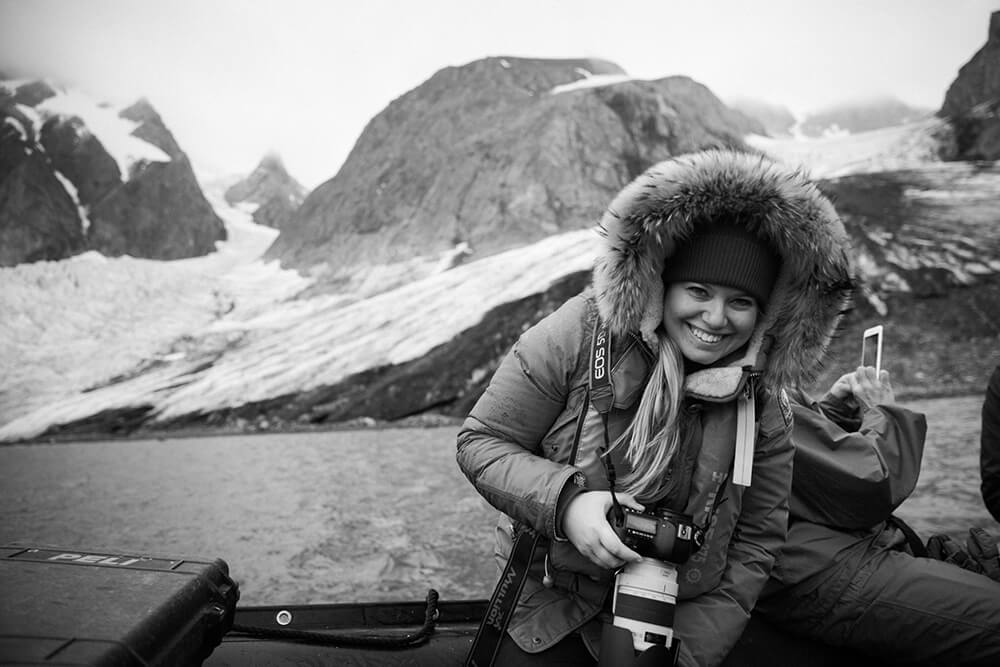 Right after being soaked by a rogue wave in Svalbard, Norway
Right after being soaked by a rogue wave in Svalbard, Norway
Avoid condensation
Drastic change in temperatures often creates condensation, which can be bad for your gear. If you’ve been outside shooting in the cold, it’s a good idea to stick your camera inside a sealed plastic bag before coming inside, so that condensation doesn’t form. Put the bag by a window, door or cool entryway so that it can slowly adjust to the temperature change.
I often keep those little bags of silica that are packed in with shoes or electronics and stick them inside my camera bag to help absorb moisture too.
Fingerless gloves are amazing
I held off buying fingerless photography gloves for the longest time because I prefer wearing mittens. But, having to pull off a mitten in sub-zero temperatures to change a camera setting, put on a filter, or even to set the focus is not fun.
Sometimes I wear thin glove-liners under my mittens, but I found photography gloves to be amazing. You can pull back the end of your thumb and forefinger to use the buttons. Mittens which pull back into fingerless gloves are just as good, but whatever you end up going with, make sure they’re waterproof.
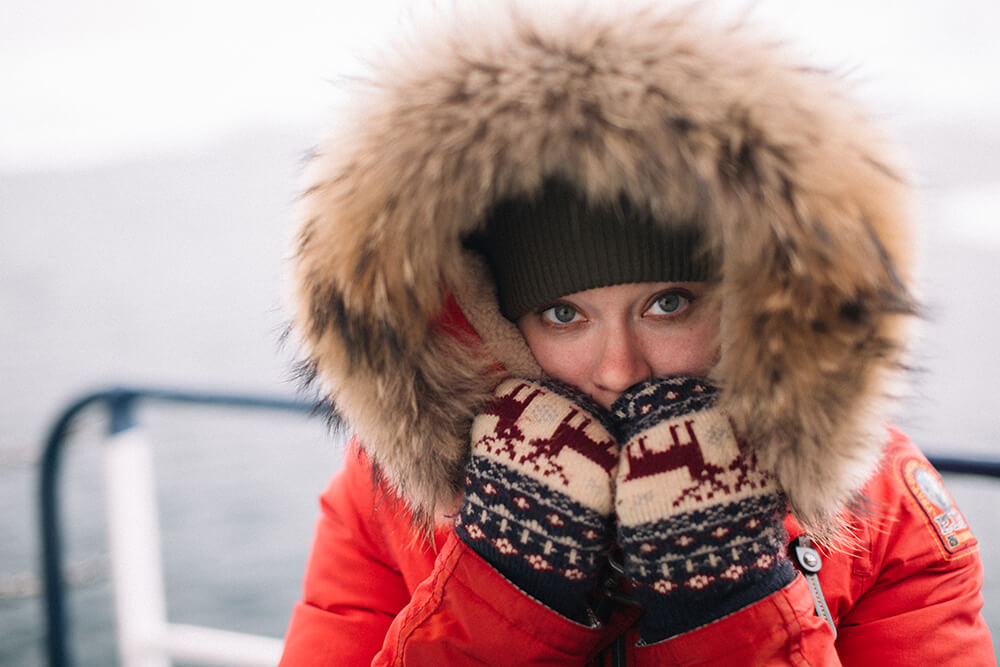 Bundled up on Svalbard in the Arctic Circle
Bundled up on Svalbard in the Arctic Circle
Wearing the right clothes is key
One of the most important things to remember when shooting in colder weather is to dress appropriately. I know that seems very obvious, but I’ve definitely made mistakes in the past and suffered for it.
I try to wear as much merino wool as possible because it keeps you very warm and also dries very fast. I often take self-portraits, so I tend to wear a bright coloured jacket that will pop in the photos.
It’s great to layer up too. I’d rather have too many layers on than not enough. The more comfortable you are outside, the longer you can stay out. Returning home early because of numb toes isn’t fun.
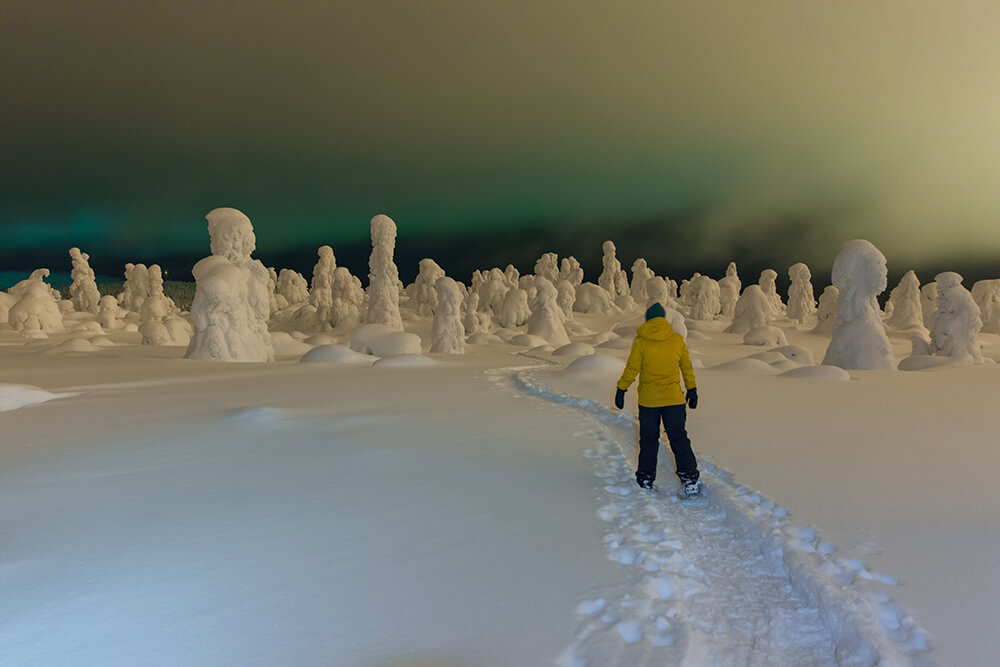 Snowshoeing under the aurora in northern Finland
Snowshoeing under the aurora in northern Finland
Shooting in RAW is a must
While many of us always shoot in RAW, it’s really important to continue to do so in winter climates. It allows for much greater flexibility in post-processing, which means you can fix a lot more later on than you can in a JPG.
Getting everything correct in-camera is a lot trickier in winter, especially if you’re shooting in difficult weather conditions. You’ll want to have the most freedom to adjust mistakes or tweak things later on when you edit.
Exposing for snow is hard
Getting the exposure correct in winter photographs can be tricky because the camera sees the white as being too bright. While it seems counterintuitive, you often need to overexpose for snow or the image will be too dark. Overexposing compensates for the metering in camera, which is set for middle grey.
Try and shoot in manual or use the exposure compensation dial to allow more light into the scene to keep the snow white.
Most importantly try and rely on your histogram readout, instead of the LCD screen, to make sure your image is exposed correctly. Often it can be hard to tell how accurate the image is on screen under the sun or bright reflective snowy scene.
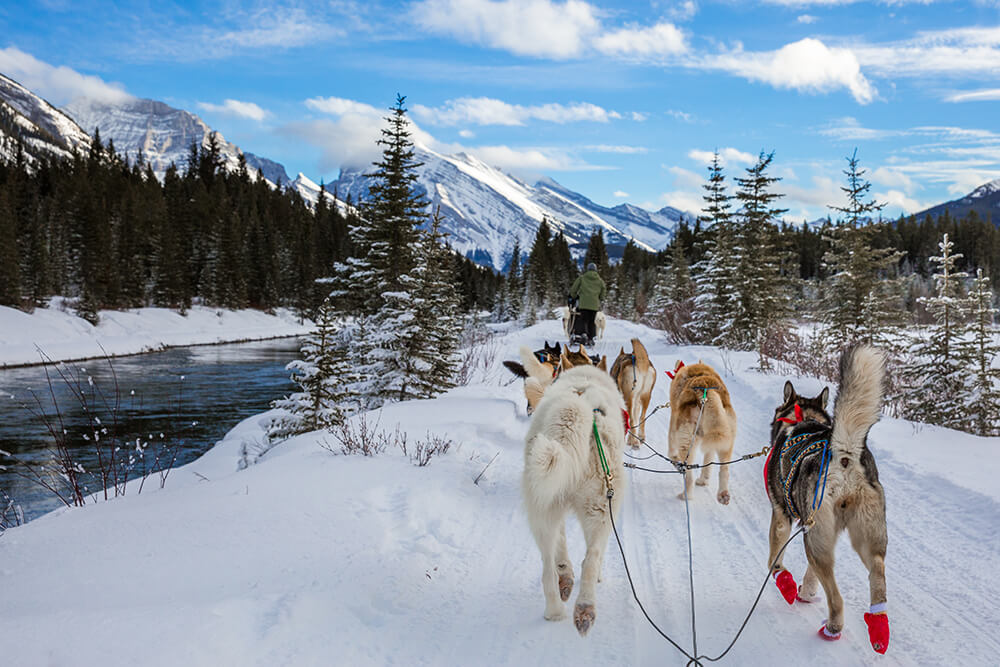 Dogsledding in Alberta, Canada
Dogsledding in Alberta, Canada
Get the white balance right
Getting the white balance correct in the snow can be tricky. Normally with an auto white balance snow photos end up coming out blue. If you want to get it correct in camera I suggest using the cloudy or flash setting to balance out the blue. You can always fine-tune the white balance when you’re editing later.
You can also use a grey card and set a custom white balance, but I find that’s too difficult in snow conditions.
Use a fast shutter speed for snowflakes
Obviously your settings will vary depending on the shots you’re trying to take. I really love the beauty of snow days when thick fat snowflakes fall slowly. To me it seems magical and reminds me of my childhood. I generally start with 1/500th of a second.
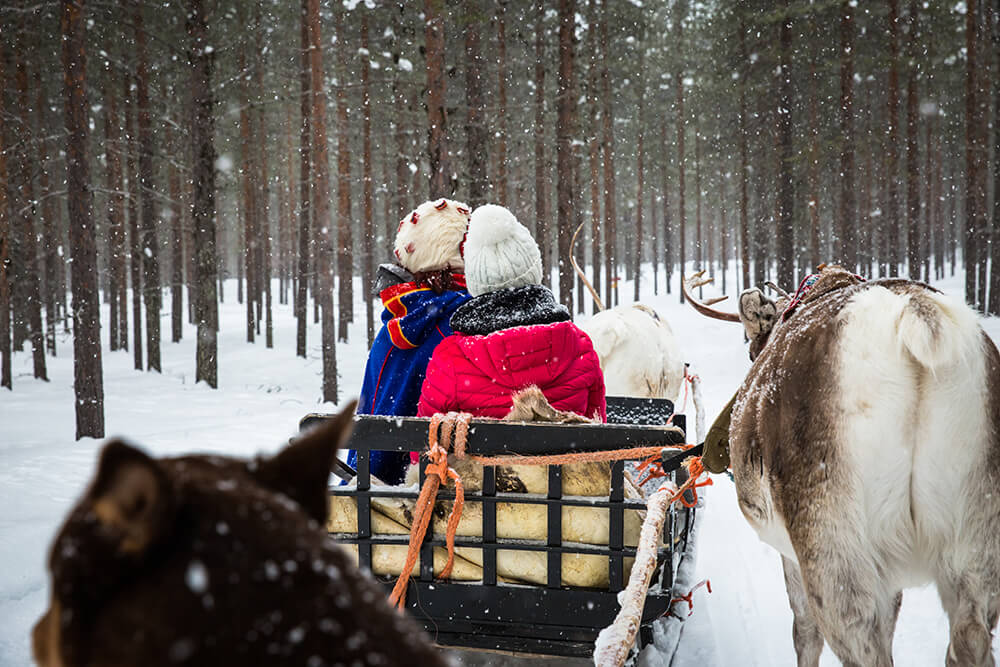 Visiting a reindeer farm in Finnish Lapland
Visiting a reindeer farm in Finnish Lapland

 Snow day in Grindelwald, Switzerland
Snow day in Grindelwald, Switzerland






